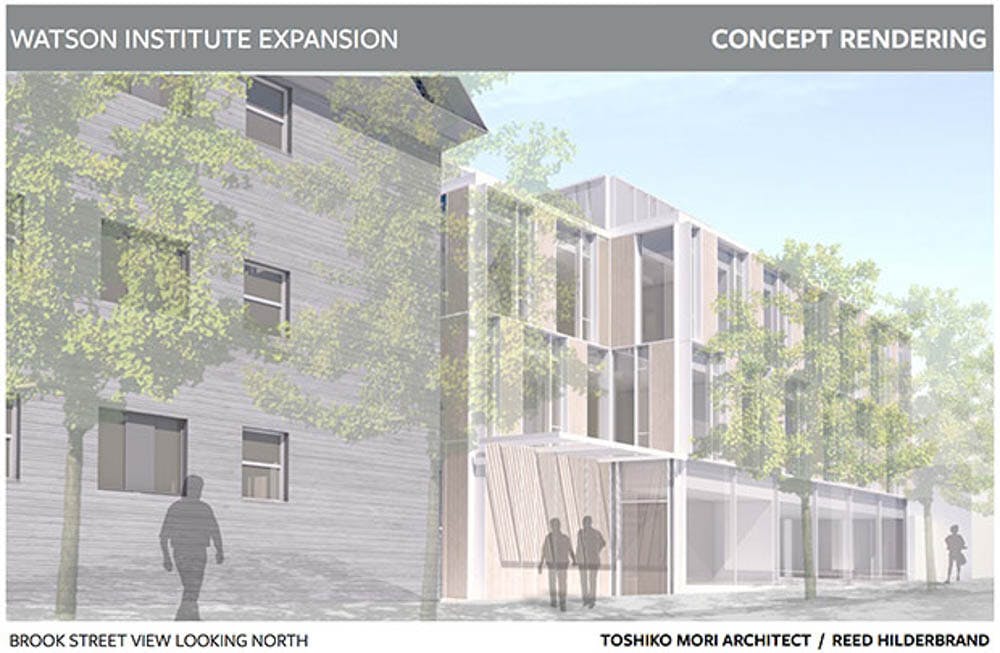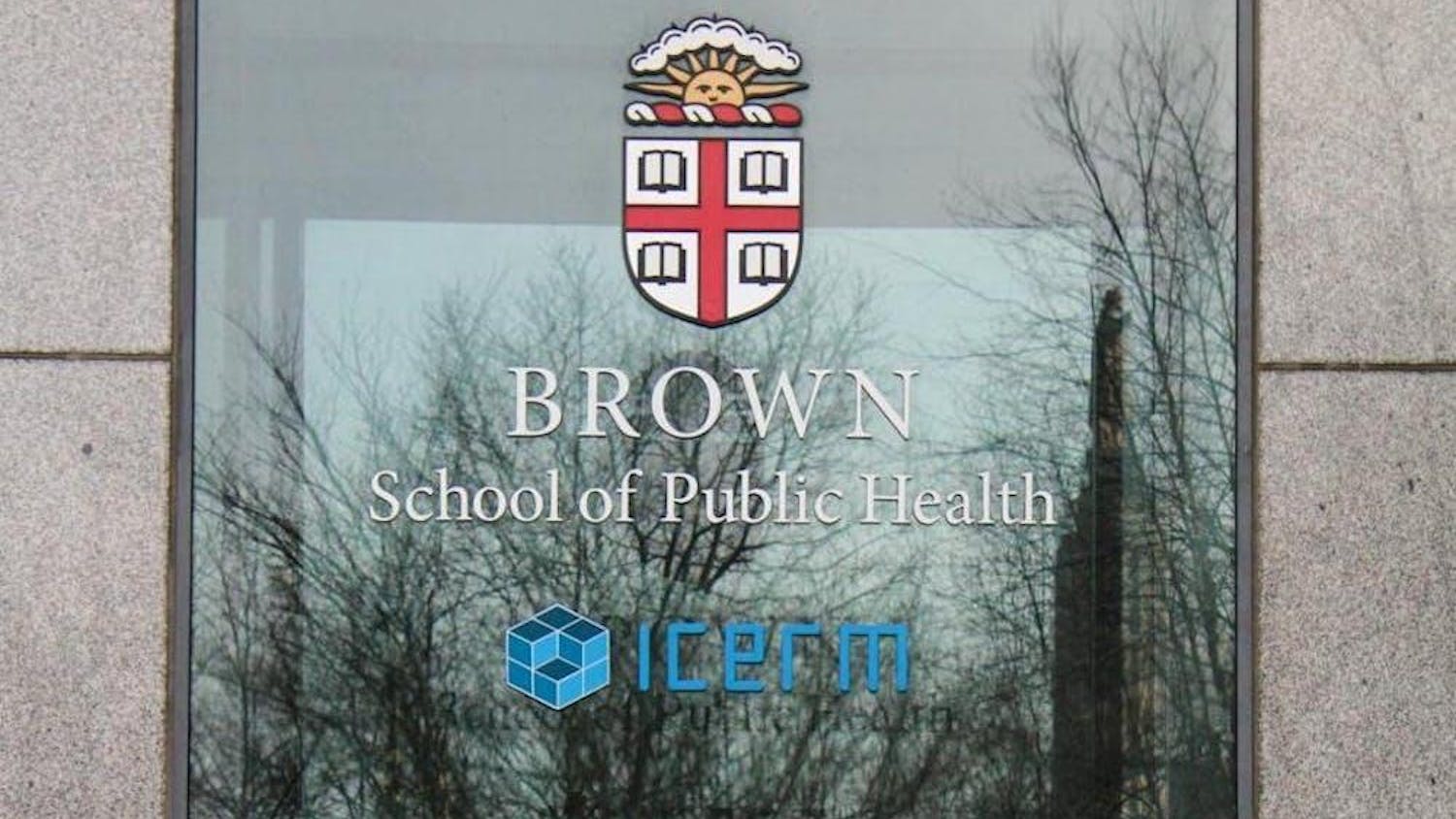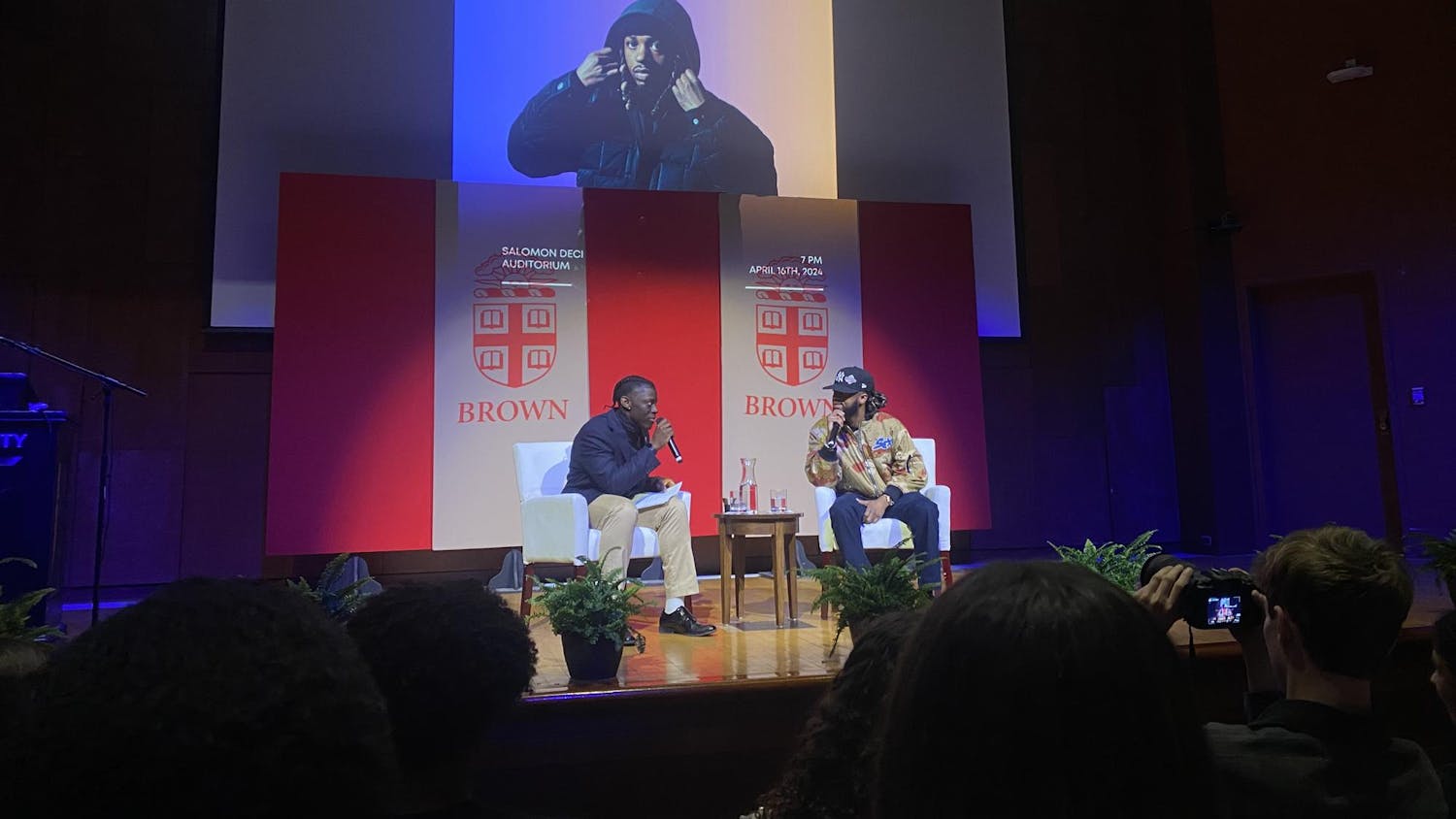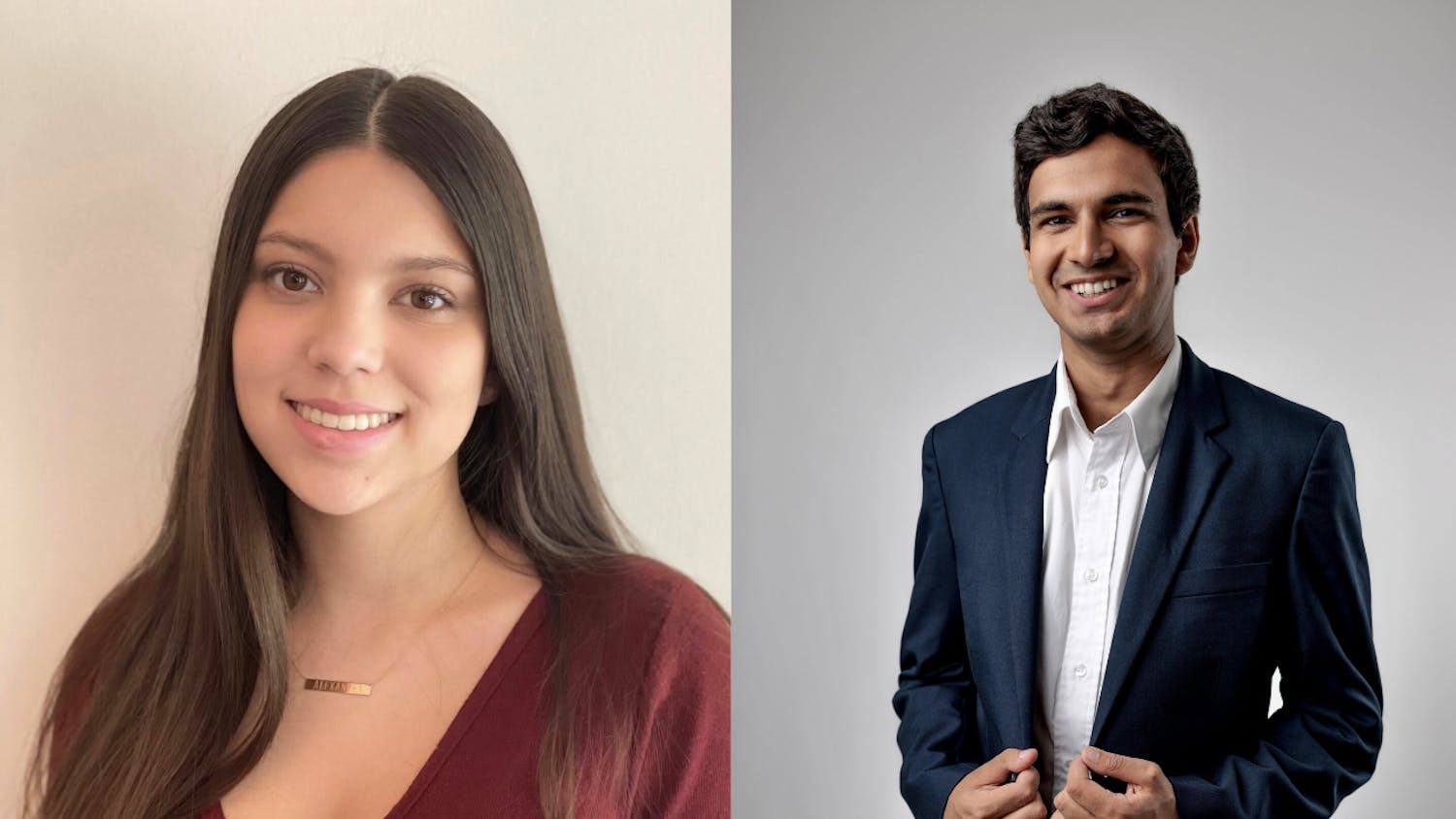The Watson Institute for International and Public Affairs is expanding into a new complex consisting of four buildings and an outdoor plaza, said Edward Steinfeld, director of the Watson Institute.
Currently, the Watson Institute consists of two buildings: 111 Thayer St., which is 78,000 square feet, and 59 Charlesfield St., which is 8,000 square feet, said Michael Guglielmo, director of design and construction. The expansion will add 31,000 square feet to their existing space — 10,000 from a renovation of 63-65 Charlesfield St. and 21,000 from 280 Brook St., which is being built from scratch. These two new buildings will be connected by a bridge once construction is finished — tentatively planned for fall 2018, said Steven Bloomfield, associate director of the Watson Institute.
The expansion’s budget is $25 million, received as a gift in November 2015, Guglielmo said.
The architect of the building is Toshiko Mori, who has worked on two other buildings at Brown: renovations of Pembroke Hall and 85 Waterman St., where she decided to place a greenhouse on the roof. “Between the combination of her success with adaptive reuse and re-imagining existing buildings on campus, (she) really aligned with the goals and aspirations of this expansion and addition to the Watson Institute,” Guglielmo said.
The foundation has been laid for the construction of 280 Brook St., which is directly to the east of the current buildings. Construction for the steel structure will begin within the next two weeks, but the facade of the building has not yet been determined, Bloomfield said. The building will be used primarily as a public gathering space, with small and large rooms to meet in, Steinfeld said.
The current buildings lack sufficient physical space for large public events that the institute often holds, Steinfeld said.
“We’ve found that we’ve had to do live streamings of events to other rooms of the building sometimes, because the Joukowsky Forum, which is our largest space,” often becomes filled to capacity, Bloomfield said. “That’s not conducive to dialogue.”
The new building will have a large, flexible classroom that seats 80 to 120 people, Guglielmo said. Joukowsky seats 59, according to Watson’s website.
Steinfeld said there are not enough spaces designed solely for students to meet in larger groups in 111 Thayer St., as it consists mainly of individual faculty offices.
Plans for the new building include meeting rooms that can fit groups of various sizes, ranging from four to 30 people, Guglielmo said. A large, agora-type space will make up a significant portion of the first floor, with an atrium-like space opening above it on the second and third floors.
“You could have public speeches, where people can assemble in formal and informal types of settings, and be able to have that discourse between the participants and the speakers” here, Guglielmo said. And “you can actually look down upon … a speech or a presentation that’s going on in that common space.”
Fostering this kind of discourse is a central goal of both Steinfeld’s and Bloomfield’s.
“The idea is to encourage interaction across different disciplines, across different types of people, across different types of interest and subject matter,” Steinfeld said. “My hope is if we create space where people will feel comfortable hanging around and spending time, they’ll be more likely to participate in our events and engage in conversations of learning.”
Starr Plaza, an existing outdoor space connecting the Watson buildings, will also see changes to its landscape and pathways, including an addition of more comfortable seating areas and a less enclosed perimeter, Steinfeld said.
Additionally, the west wall of the new building will be made of glass to overlook the plaza, Guglielmo said.
“The aesthetics are important, but to me, what’s most important is we have many people here who wouldn’t have been here before, but who feel (comfortable) now in this new space,” Steinfeld said. They “feel that they can get their work done, feel that they can relax here. I think if we have that, we’ll have more of the impromptu kind of reactions that lead to creative thinking and learning.”





